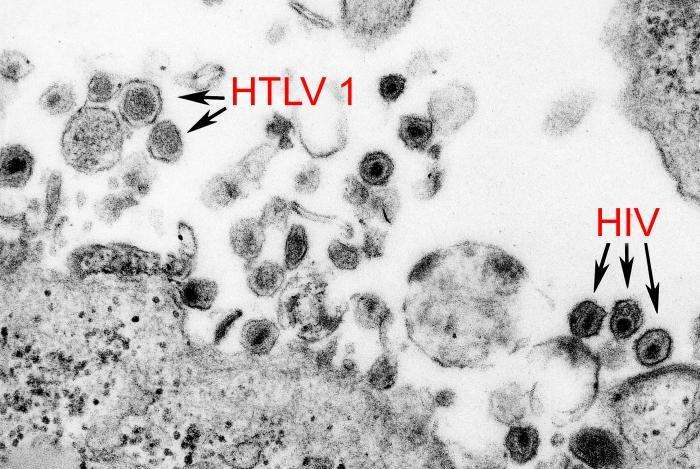Cancer-causing HTLV-1 virus is common in parts of Australia

This ancient virus has been infecting humans for over 1500 years, and new figures show a worrisome trend in Western Australia.
The human T cell leukaemia virus type 1, or HTLV-1, is a sexually transmitted virus that causes severe health conditions in humans. Worse still, there is no cure or treatment.
The deadliest of these conditions is a type of cancer affecting the body's T cells. The condition is called HTLV-1-associated myelopathy, and it affects the nervous system, potentially leading to death.
The HTLV-1 virus is an old human foe that has been found in Andean mummies more than 1500 years old, according to one study.
Today, the virus is found around the world, infecting around 5 million to 10 million people, though some parts of the world are worse affected than others. Experts warn that more research is needed to get a more accurate figure.
The HTLV-1 virus was discovered more than 35 years ago in the laboratory of Robert Gallo. He is the co-founder and director of the Institute of Human Virology at the University of Maryland School of Medicine in the USA. He also co-discovered the HIV virus back in the 1980s.
The HTLV-1 virus can be transmitted sexually and from mother to child through breastfeeding, but the most efficient mechanism of transmission is through blood, Robert explains.
About 12% of the people infected will develop serious conditions at some point in their lives, particularly cancer.
"Arguably, HTLV-1 is the most cancer-causing agent we know. No other virus or bacteria is known to cause cancer so efficiently," Robert explains.
HTLV-1 in Australia
The HTLV-I virus is thought to have originated from multiple zoonotic events, likely involving the transmission of the virus from monkeys to humans. In Australia, where monkeys do not occur, the origin of this virus likely involved human migration, possibly from Indonesia a long time ago, Robert says.
Regardless of how or when the virus got here, it's been quite successful at spreading and surviving in some populations.
According to recent estimates, in some communities of northern Australia, the rates of infection have reached alarming figures. In Alice Springs, the third-largest town in the Northern Territory, more than 40% of adults are infected with the HTLV-1 virus. Over 30% of these infected people have developed diseases associated with the virus.
This unusually high rate of infection is a bit of a mystery, but it has been attributed to a combination of the stealth infection pattern of the virus—you can get infected and feel perfectly normal for years—and the lack of proper healthcare approaches to prevent its spread.
A solution to this problem would be the development of a vaccine, but so far, there has been little research put towards that end.
No cure in sight?
With little effort put towards eliminating the spread of the virus and a lack of research funds invested in the development of a vaccine, things aren't looking good.
There are currently no healthcare policies in place to educate about this virus or prevent its spread. Robert thinks that part of the problem is that people are not aware of the HTLV-1 virus. This means that more effort is needed by the media to communicate the facts about this virus.
In a recent letter to the WHO, Robert and other world experts recommended several approaches that can be taken to prevent the transmission of the HTLV-1 virus.
Regarding Australia, Robert praised current efforts of the Australian Government to invest funds towards fighting the spread of this virus and believes Australia could become a leader in this arena.
But Gallo also stressed the need to learn more about how this virus works.
"We need more understanding of the immune disorder. That's basic science. It sounds like all the money should be for practical immediate things, but this kind of basic science is practical and needed very much," Robert says.
He thinks that, only when this basic science is understood, there might be hope for the development of a vaccine.
"Certainly, we need research on vaccines and therapies too," Robert adds. At the public health level, he says that good statistics are needed. "We need to know precisely how many people are infected, how they are getting infected," he says.
"To accomplish this, we will need to get the cooperation from all involved communities," he adds.
In the recent letter to the WHO, Robert and Fabiola Martin, at the University of Queensland, highlight some of the key steps needed to beat this disease. So far, 60 signatures from scientists and other stakeholders from around the world support this letter. Hopefully, action follows and HTLV-1 will one day be eliminated for good.
This article first appeared on Particle, a science news website based at Scitech, Perth, Australia. Read the original article.


















